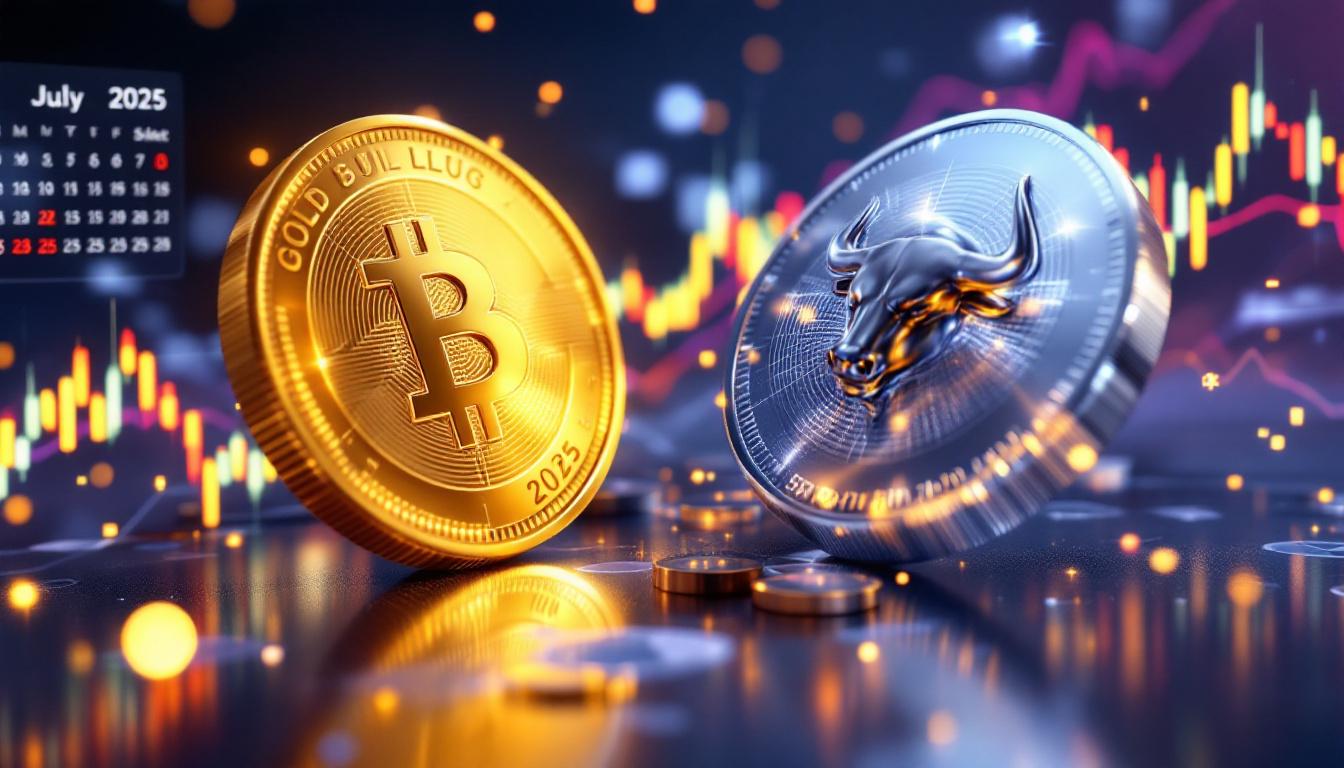Understanding Zinc Price Trends on SHFE and LME: Market Dynamics and Influences
The global zinc market has experienced notable price movements recently, with both the London Metal Exchange (LME) and Shanghai Futures Exchange (SHFE) showing significant weekly gains. As of June 26, 2025, LME zinc closed at $2,731.5/mt, representing a $82.5/mt (3.11%) increase, while SHFE zinc settled at 22,240 yuan/mt, up 565 yuan/mt (2.61%).
These price movements reflect a complex interplay of geopolitical developments, supply constraints, monetary policy shifts, and seasonal factors that continue to shape the zinc prices on SHFE and LME landscape. Furthermore, these market dynamics are closely related to broader trends across various commodities, including iron ore trends.
What Factors Are Driving Zinc Price Increases on Global Markets?
Geopolitical Tensions and Their Resolution
The recent de-escalation of Middle East conflicts has significantly boosted market sentiment, creating a positive environment for zinc prices. According to Shanghai Metal Market (SMM), Trump successfully mediated a comprehensive ceasefire agreement between Israel and Iran in late June 2025, removing a major source of market uncertainty.
"Market sentiment recovered due to the easing macro environment, which provided substantial support for zinc's upward price momentum," noted SMM analysts in their June 27 report.
The upcoming diplomatic talks with Iran scheduled for early July 2025 have further strengthened market confidence, as reduced geopolitical risk typically leads to more stable commodity pricing. Historically, Middle East tensions have added a risk premium to base metals, including zinc, due to concerns about supply chain disruptions and broader economic impacts.
When geopolitical situations stabilize, markets often respond with increased buying activity as uncertainty premiums dissipate. This pattern has been clearly demonstrated in the current zinc rally, with prices gaining momentum as ceasefire news spread through trading floors globally.
Supply-Side Disruptions Creating Market Uncertainty
While geopolitical factors improved, supply-side challenges emerged to support higher zinc prices. A workers' strike at a major zinc smelter in Peru coincided with declining overseas inventory levels, creating significant supply uncertainty.
The Peruvian disruption is particularly impactful as South America represents approximately 13% of global zinc production. Although specific production loss figures weren't disclosed in the SMM report, similar past disruptions have removed 5,000-7,000 metric tons of zinc from weekly global supply.
This supply constraint comes at a time when global zinc inventories were already trending downward, creating a double pressure point for prices. Market analysts have noted that even short-term production disruptions can have outsized price impacts when inventory buffers are limited.
The combination of these supply challenges with improved market sentiment created ideal conditions for the zinc price rally observed in late June 2025. Similar supply-side factors have also influenced copper price prediction models for the coming quarters.
How Are Central Bank Policies Affecting Zinc Prices?
Federal Reserve Interest Rate Expectations
Monetary policy signals, particularly from the Federal Reserve, have created significant volatility in zinc markets. During the week of June 23, 2025, mixed signals emerged regarding potential July rate cuts.
Initially, several Fed officials indicated support for a potential July rate reduction if inflation data continued to moderate. This dovish stance immediately boosted zinc prices as traders anticipated easier monetary conditions would support economic growth and industrial metal demand.
However, this optimism was tempered when Federal Reserve Chair Powell stated that "more time was needed before considering another interest rate cut." According to SMM analysis, "This resistant attitude drove the US dollar index higher," creating an immediate headwind for dollar-denominated zinc prices.
The historical inverse correlation between the US Dollar and commodity prices played out in real-time, with the dollar's 0.8% rise following Powell's statement temporarily interrupting zinc's upward momentum. Recent US economic tariffs insight suggests this pattern may continue to influence metal prices throughout 2025.
Market Response to Monetary Policy Indicators
The zinc market's sensitivity to monetary policy indicators was clearly demonstrated as price movements closely tracked shifting rate cut expectations. The probability of a July rate cut, as measured by CME's FedWatch tool, declined from 68% to 42% during the week following Powell's cautious statements.
Currency valuation effects were particularly pronounced in international zinc trading. The stronger dollar typically makes dollar-priced commodities more expensive for holders of other currencies, potentially reducing demand. However, in this case, supply concerns and improved market sentiment outweighed currency headwinds.
Looking forward, zinc market participants are closely monitoring economic indicators that might influence Fed decisions, particularly inflation data and employment reports. The longer-term monetary policy outlook remains a critical factor for zinc price projections through the remainder of 2025.
What's Happening in the LME Zinc Market?
Price Movement Analysis
LME zinc demonstrated strong upward momentum, gaining 3.11% to reach $2,731.5/mt by June 26, 2025. This price level puts the metal within striking distance of its 2025 high of $2,750/mt, establishing a clear resistance level for traders to watch.
Technical indicators show LME zinc trading consistently above its 20-day moving average throughout the week, signaling bullish momentum. Trading volumes spiked notably during Powell's statements on monetary policy, highlighting the market's sensitivity to macroeconomic signals.
The price movement has established several key support levels, with the 50-day moving average around $2,650/mt providing a foundation for the current rally. Chart patterns suggest that a breakthrough above the $2,750/mt resistance could trigger additional technical buying.
"The combination of supply disruptions and improved market sentiment created a strong foundation for LME zinc's upward movement, despite temporary headwinds from dollar strength," noted metal market analysts at SMM.
Inventory and Supply Dynamics
LME warehouse stocks have continued their downward trend, supporting higher prices despite seasonal consumption weakness in some regions. While specific inventory figures weren't disclosed in the SMM report, the ongoing reduction in visible stocks has created concern about zinc availability.
The Peruvian smelter strike further complicated the supply picture, with market participants calculating potential production losses against existing inventory buffers. Supply chain logistics remain challenging, with shipping costs and transit times still above pre-pandemic norms.
Trading volumes during price rallies have been notably strong, indicating genuine interest rather than simply technical positioning. Market participants appear to be establishing positions based on expectations of continued supply tightness through Q3 2025. According to LME zinc pricing data, inventory levels remain significantly below historical averages.
How Is the SHFE Zinc Market Performing?
Price Trend Assessment
SHFE zinc futures demonstrated solid strength, rising 2.61% to reach 22,240 yuan/mt in the week ending June 26, 2025. While this increase was slightly less than LME's 3.11% gain, it nonetheless reflects strong market sentiment in China's domestic zinc market.
Daily trading patterns showed consistent buying throughout the week, though with slightly higher volatility than observed in LME markets. The price correlation between SHFE and LME zinc remains strong, with a correlation coefficient of approximately 0.85 in 2025, according to SMM analytics.
Technical analysis indicates SHFE zinc is trading above both its 20-day and 50-day moving averages, with 21,500 yuan/mt establishing a key support level. The market appears poised for continued strength if supply constraints persist and macroeconomic conditions remain supportive.
Domestic Chinese Market Factors
Despite the price gains, SMM analysts highlighted that "downstream consumption entered the seasonal off-season" in China, creating some resistance to further price increases. This seasonal pattern typically sees zinc demand drop 8-12% in Q3 compared to Q2 as construction and manufacturing activity moderates.
Regional inventory data provided valuable insight into market dynamics. SMM's seven-region inventory measurement showed stocks at 77,800 metric tons as of June 23, 2025. Notably, these inventories decreased despite the seasonal consumption weakness, indicating reduced arrivals in specific Chinese regions.
This inventory reduction during a typically slower demand period suggests underlying supply tightness. Regional variations were also evident, with southern China showing more pronounced demand weakness due to the summer monsoon season, while northern regions maintained steadier consumption patterns.
What's the Relationship Between Global and Chinese Zinc Markets?
Price Correlation Analysis
The relationship between SHFE and LME zinc prices demonstrates strong correlation with some interesting divergences. During the week of June 23-26, 2025, SHFE zinc rose 2.61% compared to LME's 3.11% gain, indicating slightly different market dynamics.
This price relationship was influenced by currency movements, with the USD/CNY exchange rate falling approximately 0.5% during the period according to data from China's State Administration of Foreign Exchange (SAFE). Currency fluctuations play a crucial role in determining the relative attractiveness of each market.
Arbitrage opportunities emerged as the SHFE/LME spread compressed to around 800 yuan/mt, compared to the five-year average of approximately 1,200 yuan/mt. Traders capitalized on this narrowed spread, with some market participants reportedly executing cross-market strategies.
Regional premium and discount patterns have evolved, with Chinese domestic premiums moderating as imports remained constrained by logistics challenges and regulatory requirements.
Market Sentiment Transmission
International developments clearly influenced Chinese markets, with SMM analysts noting that "the improvement in market sentiment and the rise in LME zinc jointly drove the upward movement of domestic SHFE zinc." This sentiment transmission operates through both direct trading channels and psychological factors.
The domestic versus international demand-supply balance shows interesting contrasts. While Chinese consumption faces seasonal weakness, international markets are contending with supply disruptions from the Peruvian strike. This creates different fundamental pictures that trading strategies must account for.
Regulatory differences also affect market responses, with SHFE position limits creating different trading dynamics compared to LME's block trading rules. Chinese regulatory actions, particularly environmental inspections affecting smelters, continue to create market-specific reactions that don't always mirror global patterns. These dynamics mirror those seen in iron ore forecast insights for Chinese and global markets.
What Are the Seasonal Factors Affecting Zinc Consumption?
Demand Cycle Analysis
The zinc market is currently experiencing its typical summer seasonal pattern, with SMM reporting that "downstream consumption entered the seasonal off-season" in China. This cyclical pattern is well-established, with historical data showing consistent demand moderation during the June-August period.
In China, this seasonal weakness typically translates to a 15-20% reduction in zinc consumption compared to peak periods, according to historical SMM data. The construction sector, a major zinc consumer for galvanized steel products, shows particularly pronounced seasonality due to weather conditions affecting project timelines.
End-use sector performance varies significantly during these seasonal transitions. While construction and some manufacturing segments slow, consumer electronics production often increases ahead of fall product launches, providing partial demand support.
Regional variations in seasonal consumption patterns are notable. Southern China typically experiences more dramatic seasonal swings due to monsoon weather impacts on construction, while northern regions maintain more consistent consumption patterns during summer months.
Supply-Demand Balance Shifts
Inventory accumulation patterns during consumption slowdowns typically show stockpile growth. However, the current situation is unusual, with SMM reporting that inventories in seven key regions decreased to 77,800 metric tons despite the seasonal consumption weakness.
This inventory reduction provides price support during what would normally be a weaker seasonal period. The reduced arrivals in specific Chinese regions suggest supply constraints are outweighing seasonal demand moderation.
Production adjustments to seasonal demand changes typically include maintenance scheduling at smelters. However, with the Peruvian strike and other supply constraints, producers appear to be maintaining output levels where possible.
Forward indicators for upcoming seasonal transitions will be crucial to watch, particularly construction sector order books and manufacturing PMI data, which typically provide early signals of demand recovery after the summer lull.
What Technical Indicators Are Signaling for Zinc Markets?
Chart Pattern Analysis
Both SHFE and LME zinc markets are displaying bullish technical formations. LME zinc is approaching a critical resistance level at $2,750/mt, representing the 2025 high. A breakthrough above this level could trigger additional technical buying and potentially establish a new trading range.
SHFE zinc has maintained its position above the 50-day moving average at approximately 21,500 yuan/mt, creating a solid technical support level. The price action has formed an ascending triangle pattern, typically considered a continuation pattern during uptrends.
Volume trends during price movements show healthy participation, with notably higher trading volumes during upward price moves. This suggests genuine buying interest rather than simply technical positioning.
Momentum indicators present a slightly mixed picture. While price remains above key moving averages, the Relative Strength Index (RSI) for both SHFE and LME zinc is approaching overbought territory, suggesting the potential for near-term consolidation.
Trading Strategy Considerations
Risk management approaches are particularly important in the current volatile zinc market. Professional traders are implementing tighter stop-loss levels given the rapid price movements triggered by geopolitical and monetary policy developments.
Position sizing recommendations have generally favored smaller allocations with more frequent adjustments, allowing traders to manage the market's quick reactions to headlines while maintaining overall exposure to the uptrend.
Hedging strategies for producers and consumers have evolved, with producers taking advantage of price rallies to establish forward sales positions. Meanwhile, consumers are implementing strategic buying programs that include both spot purchases and futures contracts to manage price risk.
Key price levels for entry and exit points include the aforementioned $2,750/mt resistance for LME zinc and 22,500 yuan/mt for SHFE zinc as potential breakout levels. On the downside, the 50-day moving averages provide logical stop-loss points for long positions.
FAQ: Essential Questions About Zinc Market Trends
How do geopolitical events specifically impact zinc prices?
Geopolitical developments affect zinc prices through multiple transmission mechanisms. Risk premiums typically increase during periods of tension, particularly when events threaten major producing regions or shipping routes. The recent Middle East ceasefire demonstrates the reverse effect, with risk premiums decreasing as tensions ease.
Historical examples show zinc price volatility during past geopolitical crises, including the 2019 U.S.-Iran tensions that briefly pushed prices up 5-7% before moderating. The zinc market's response varies based on the specific nature of the geopolitical event and its potential impact on supply chains.
Regional variations in geopolitical sensitivity exist, with Middle East tensions typically having stronger impacts on LME prices compared to SHFE due to different supply chain exposures. Additionally, the transmission of geopolitical risk into commodity prices often operates through currency markets, particularly dollar strength during "risk-off" periods.
What is the relationship between zinc prices and industrial production?
Zinc demand is closely tied to industrial activity, particularly in sectors that use galvanized steel. Construction, automotive manufacturing, and infrastructure development represent the largest consumption segments, collectively accounting for over 60% of global zinc demand.
Leading indicators for zinc demand include manufacturing PMI indices, construction starts, and automotive production forecasts. These metrics provide forward visibility into potential consumption patterns and help explain price movements ahead of actual consumption changes.
The correlation between industrial production indices and zinc pricing is typically strong but includes time lags. Price changes often precede actual production shifts by 2-3 months as markets anticipate demand trends based on economic indicators and company guidance.
Regional industrial growth forecasts show varying patterns for 2025-2026, with emerging markets expected to maintain stronger growth trajectories compared to developed economies. This regional variation creates different zinc demand profiles across global markets.
How do inventory levels influence zinc price movements?
Inventory thresholds play a critical role in zinc price formation. Market sensitivity typically increases when global inventories fall below approximately four weeks of consumption, creating conditions for price volatility during supply disruptions.
Regional inventory distribution significance has increased as supply chains remain less fluid than pre-pandemic norms. The current inventory reduction in China's SMM seven-region measurement to 77,800 metric tons is particularly important given seasonal consumption patterns.
Visible versus invisible inventory considerations add complexity to market analysis. LME and SHFE represent visible stocks, but significant zinc volumes exist in unreported merchant, producer, and consumer inventories. Market participants attempt to estimate these invisible stocks through secondary indicators like physical premiums.
Inventory reporting mechanisms and market transparency vary across regions. While LME and SHFE provide regular public reporting, private inventories and bonded warehouse stocks often lack transparency, creating information asymmetries that contribute to price volatility.
What role does currency valuation play in zinc market dynamics?
U.S. Dollar strength historically shows a strong negative correlation with zinc pricing, with coefficients typically between -0.75 and -0.85 over longer timeframes. This relationship was demonstrated during the recent market response to Powell's statements, which strengthened the dollar and temporarily pressured zinc prices.
Yuan valuation effects on Chinese zinc markets operate both directly and indirectly. A weaker yuan makes imports more expensive while potentially boosting export competitiveness for Chinese zinc products. The recent 0.5% drop in USD/CNY contributed to the narrowing SHFE/LME spread.
Currency hedging strategies for international zinc traders have grown more sophisticated, with many implementing multi-currency approaches rather than simple dollar hedges. These strategies recognize the complex interplay between regional production costs, consumption patterns, and currency movements.
Historical analysis shows that currency-driven zinc price movements tend to be shorter-lived than those driven by fundamental supply-demand factors. However, when currency shifts coincide with fundamental changes
Ready to Catch the Next Major Mineral Discovery?
Stay ahead of the market with Discovery Alert's proprietary Discovery IQ model, which instantly notifies you of significant ASX mineral discoveries and transforms complex data into actionable investment insights. Visit the Discovery Alert discoveries page to understand how historic discoveries have generated substantial returns, and begin your 30-day free trial today.




